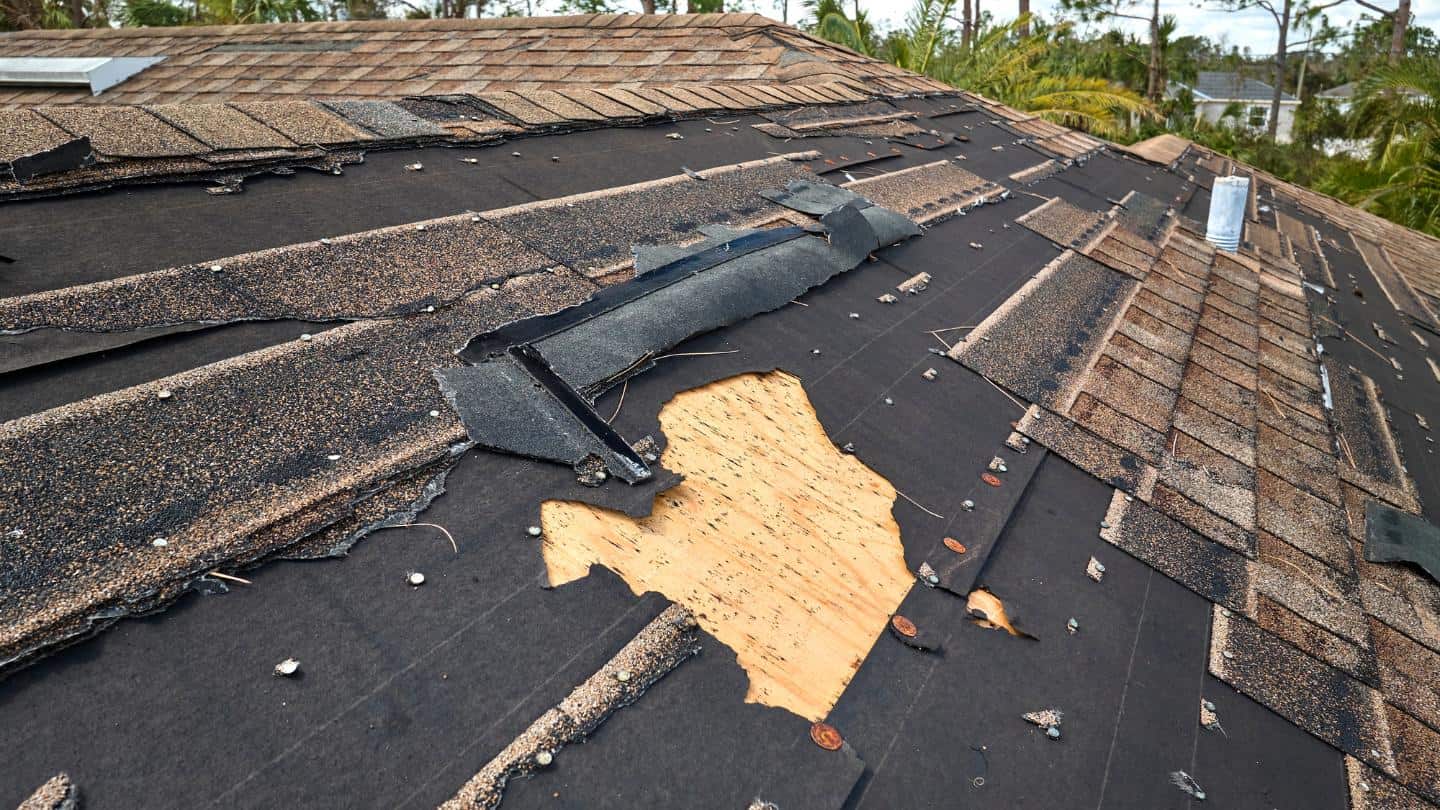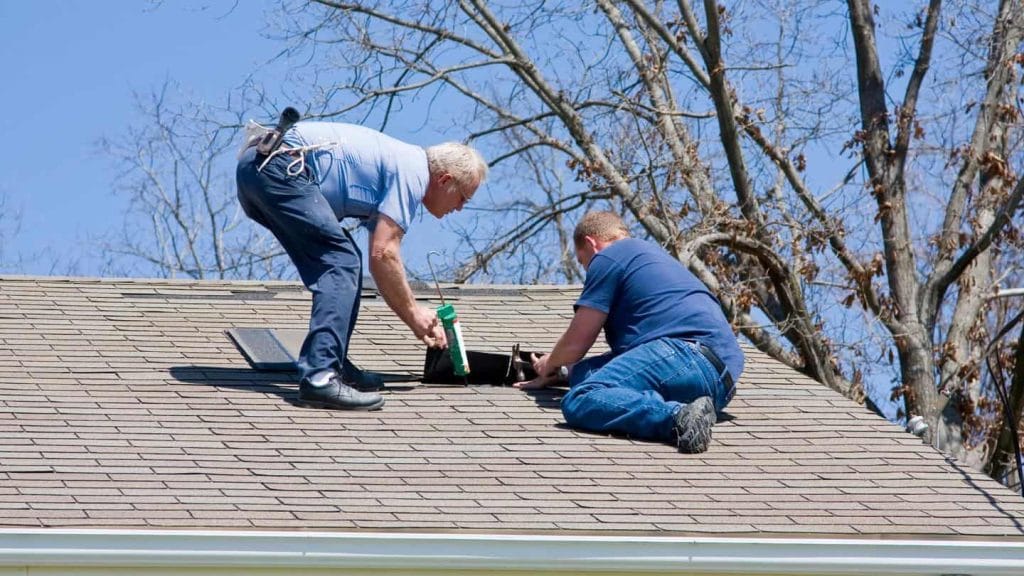When it comes to maintaining your home, the roof often takes a backseat until there’s an issue that needs urgent attention. Whether it’s a minor leak or significant damage due to weather conditions, understanding the potential costs of roof repair is vital. It can feel overwhelming when you’re not sure what the bill might look like, but don’t worry! This article will shed light on how much you could expect to pay for minor roof repairs and the factors influencing these costs.
Among various elements influencing the price tag of your roof repair are the size and extent of damage, age and type of roofing material used in your house. Your location also plays a role – labor prices vary across regions, and accessibility of your home could impact costs too. Moreover, additional services required during repairs add up to your final bill. In this guide we’ll be breaking down each factor so you can better understand where your money goes when repairing your trusty shelter overhead–your roof.
Deciphering the Basics of Home Maintenance Expenses
When it comes to the basics of home maintenance expenses, you’ve got to understand that each task has its own set of costs which can quickly add up, painting a picture of your overall financial commitment. It’s not just about a single repair or upgrade; it’s about all the little things that come together in keeping your home in top shape. With this in mind, effective budgeting techniques become essential. You need to consider both regular and unexpected costs – from monthly utility bills and annual property taxes, right down to those pesky surprises like a broken water heater or roof repairs.
Maintenance prioritization is also key when managing these costs. Sure, you’d love to freshen up the living room with new paint or get that high-tech security system installed, but what if your roof starts leaking unexpectedly? That’s going to require immediate attention and potentially a good chunk of change. Instead of being caught off-guard by such unforeseen incidents, establish an emergency fund as part of your budgeting strategy. This way, even if you face any home maintenance emergencies like roof repair needs suddenly popping up on your list, you won’t be left scrambling for funds.
The Size of the Damage

The larger the area of damage, the steeper your bill is likely to be. The size of the damage directly impacts the overall cost of roof repair. When a professional comes out for a damage assessment, they’ll inspect how extensive the issue is and make decisions about repair methods based on that. This process involves determining whether a small section can be patched up or if larger areas will need to be completely replaced.
It’s important to remember that while smaller repairs might seem less expensive at first glance, they could end up costing more in the long run if not dealt with properly. For instance, repeated patching might only provide temporary relief from leaks and may eventually lead to underlying structural problems due to ongoing water exposure. Therefore, when it comes to roof repairs, it’s crucial not just to consider immediate costs but also long-term value and effectiveness of chosen repair methods.
The Age and Type of Your Roofing Material
Your home’s crowning glory might be made from a range of materials – from traditional shingles to modern metal panels, and its age could significantly influence the overall repair expenses. The type and age of your roofing material play a critical role in determining how much you’ll shell out for repairs. Remember that different materials have varying degrees of longevity. For instance, while asphalt shingles typically last about 15-20 years, metal roofs can endure up to 50 years or more. If your roof is nearing the end of its expected lifespan, it could require more extensive repairs or even replacement, which will certainly hike up the costs.
The weather impact on your specific roofing material also factors into potential repair costs. Certain materials are known to withstand harsh weather conditions better than others. For example, wood shakes are highly susceptible to damage from heavy rain or strong winds whereas clay tiles resist severe weather remarkably well but may crack under significant physical impact. So if you live in an area prone to extreme weather conditions, this could lead to more frequent and costly repairs over time due to accelerated wear and tear on less durable materials. It’s crucial then that you factor in these considerations when assessing potential roof repair costs based on the type and age of your existing roof covering.
Location of Your House
Geographical location, believe it or not, can also play a considerable role in how steep the bill might be for any necessary home fixes. If you’re living in an area with extreme weather conditions, climate impact on your roof could result in more frequent and severe damage. For instance, houses located in hurricane-prone regions may experience heavy wind damage to their roofs. On the other hand, homes situated in regions with harsh winters might need to tackle ice damming issues which can cause significant harm to your roofing system.
Moreover, local regulations surrounding building codes and permits can also affect the cost of roof repairs. Some areas have stringent rules that require certain types of materials or specific repair methods which could be pricier than standard options. Similarly, if you live in a historical district or a community with strict homeowners’ association rules, you might be obligated to follow particular guidelines for roof repairs that could increase costs. So always do your research on local codes and regulations before starting any roof repair project to avoid unexpected expenses down the line.
Accessibility of the Roof

Believe it or not, even the accessibility of your home’s topmost layer can send your budget spiraling out of control. If your roof is difficult to access, perhaps due to its height, steepness, or lack of nearby structures for support, then the cost of repair will likely increase. This is because more complex roofing safety measures need to be implemented to ensure that workers can carry out their tasks without risking injury.
In addition to increased labor costs associated with a hard-to-reach roof, you’ll also have to factor in climbing equipment costs. Specialized ladders, harnesses and other safety gear are necessary for these types of jobs. It’s not just about getting up there; it’s about doing so safely and effectively while minimizing potential risks. So when considering the overall cost for minor roof repairs, don’t overlook the impact that accessibility could have on your final bill.
Cost of Labor in Your Area
Living in a pricey neighborhood? Then it’s likely you’ll be shelling out more for labor when it comes to fixing up your roof. You see, regional wage differences play a significant role in the cost of roof repair labor. In areas where the cost of living is high, skilled tradespeople understandably charge more for their services. On the other hand, if you’re situated in an area with lower living costs, you might find roof repairs to be less expensive due to lower labor rates.
But there’s another factor that could push up your roofing repair bills: the scarcity of skilled labor. When qualified roofers are at a premium, they can command higher prices for their work. This means that if there are few experienced and reliable roofers in your locale, you may have to dig deeper into your pockets to afford their expertise. So while you can’t control what part of town you live in or how many competent professionals are available around you, being aware of these factors helps set realistic expectations about roofing repair costs.
Additional Services and Costs
Don’t forget, when you’re budgeting for such projects, it’s not just the labor and material costs you need to account for; additional services could add a significant sum to your final bill. Services like roof inspections or consultations can increase the cost of your roofing project. For instance, if you need an expert to assess the damage before repairs commence, this will likely come with its own separate charge. Similarly, emergency services might also be an unexpected expense. If your roof needs immediate attention due to severe weather conditions or unforeseen damage, many companies charge a higher rate for these urgent requests.
Moreover, disposal of old materials is another aspect that impacts the total cost of roof repair. If your project involves removing shingles or other types of roofing material and disposing them off-site, there might be additional charges involved based on local waste management fees. In some cases, these material costs can stack up quickly depending on what type of debris is being hauled away and how much there is to remove. So always consider these factors in order to avoid any surprises when the final invoice arrives!
Conclusion
In the end, it’s clear that numerous factors can influence the overall cost of your roof repair. The size and location of damage, age and type of roofing material, along with labor costs in your area all come into play.
Remember, while dealing with minor repairs might seem daunting, neglecting them could lead to major problems down the line. So don’t hesitate; get those repairs done to ensure your home remains safe and secure.














